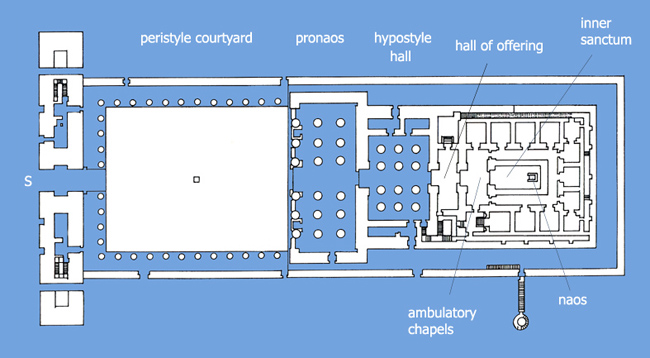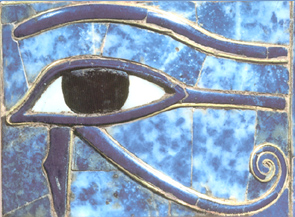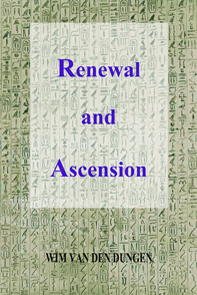|
Carl
Gustav Jung (1875 - 1961), a colleague of Freud, initiated so-called
"Analytical Psychology", another view on depth-psychology
besides Freudian psychoanalysis. Jung developed a depth-psychological
model of man inviting a psychological comprehension of symbols,
myths, rituals, dreams and spiritual practices, irrespective of their
spatial (place) and temporal settings.
For Jung, Freud's conception of the unconscious (the libidinal drive,
rooted in "Thanatos & Eros", was deemed too personalized and limited to a
certain era).
Originally, the concept of the "unconscious" was limited to denote the
state of repressed or forgotten contents. Freud made the next step, for
the unconscious (as a storehouse of repressed psychic material) seemed to
operate as an acting subject within the subject. Freud, although aware of the archaic and
mythological foundation of thought, affects & volition, had approached the unconscious from
his own
personal perspective.
Jung conjectured Freud's "personal unconscious" rested
upon a deeper, inborn layer, with contents and modes of behavior
"that
are more or less the same everywhere and in all individuals. It is, in
other words, identical in all men and thus constitutes a common psychic
substrate of a suprapersonal nature which is present in every one of
us." (Jung, Collected
Works, vol.9, 1, § 3). The "collective unconscious" contents
are archaic, primordial types, or "archetypes" (a term also used
by Philo of Alexandria with reference to the God-image in man). Jung
pointed out that in all spiritual traditions, folk lores, myths and
fairytales of humanity, esoteric teachings are contents of the
collective unconscious which have been perceived and changed into
conscious formulae. Archetypal ideas are the manifest, visible form of
archetypes. An archetypal idea is
"essentially
an unconscious content that is altered by becoming conscious and by being
perceived, and it takes its colour from the individual consciousness in
which it happens to appear." (§ 6). What an archetype as such is, can thus never be known.
The model of Jung may be partly in accord with the triune brain :
-
the
human brain (a neocortex divided in two asymmetrical hemispheres)
processing ego-consciousness, subconscious, personal unconscious &
Shadow ;
-
the
mammalian brain (limbic system) excuting the archetypes of relatedness
of the collective unconscious : the Anima or the Animus ;
-
the
reptilian brain (brainstem) computing the archetypes of transcendence
(cf. the "fourth" state) of the collective unconscious : the
Self.
As on the
ideas of Jung a large amount of relevant data may be found on the
internet, we shall focus on the basics of Jung's archetypal psychology,
namely the process of "healing the soul" or
"individuation", the complete development of the psyche and the
emergence of the "total man".
Jung conjectured this process of individuation entailed the conscious
integration of three fundamental archetypes : the Shadow, Anima (or
Animus) and the Self.
The Shadow personifies everything a person refuses to acknowledge
about himself, leading to complexes and compulsive, obsessive activities.
In a male (female), the Anima (Animus) is the unconscious feminine
(masculine) side. This polarity (duality) has to be integrated by
perceiving the archetypal ideas which emerge because of both.
Only when the latter has happened, the Self, as the point in the middle of
the circle, may emerge. This is the total man, the "supraordinate
personality", man as he really is and not as he appears to himself.
Because a person's ego is related to the Self as a part is to the whole,
the Self is called "supraordinate". To this wholeness, the
collective unconscious also belongs. Jung interpreted the collective
unconscious as "impersonal" (§ 314), and so the Self was unable
to arise in consciousness directly, but manifested exclusively by way of
projection. Jung was not a hylic pluralist.
In a Jungian approach,
the Egyptian deities are archetypal ideas. Hence, Egyptian religion as a
whole is looked at as the manifestation of various systems of archetypal
ideas (cf. the Enneads or "companies of gods"). Myths and
theological systems reveal psychic phenomena, i.e. collective &
subjective (Ancient Egyptian) perceptions of objective natural events,
rather than observation of facts. This is especially so for the
ante-rational mind and the Egyptian deities, who, together with the hidden,
fugal and precreational Atum, are born, rise, go under and are reborn.
The
Jungian process of individuation, can be traced back :
Temple
Ritual
(Edfu, Dendera) |
Qabalah
(Tree of Life) |
Christian
mysticism |
Alchemy |
Jung |
| courtyard |
KA |
Assiah |
probatio |
negrido |
Shadow |
|
pronaos
hypostyle hall |
AB |
Yetzirah |
purificatio |
offering
hall
ambulatory |
BA |
Briah |
illuminatio |
albedo |
Anima/
Animus |
|
naos |
AKH |
Atziluth |
deificatio |
rubedo |
Self |
In Ancient
Egypt, the process of individuation was made spatial, as it were
eternalizing the stages of spiritual growth in the architecture of the
temples. Thanks to the Greeks, a more abstract level was reached (cf. the
"Sephiroth" in qabalah), but the basic structure remained in
place. But in all temples, Pharaoh was the officiating high priest.
Indeed, Pharaoh could be understood as an archetypal idea of the
"Perfect Man", a being accomplishing the ultimate
spiritualization, i.e. a Self-realized human being. Viewed as such, the
Ancient Egyptian cermonial order reveals itself as a gigantic effort to
symbolize the process by which Pharaoh (Self-realization) exists and
endures. When studied as such, these various rituals are archetypal ideas
in action, focalizing their energy to the filial relationship between the
Perfect Man and his "great god" in the naos.

the
great temple
of Horus of Behdet at Edfu
Egyptian temple
architecture points to a procession in four steps,
moving from light, tall & flat to dark, small & raised :
-
peristyle
courtyard : is a great open space, inundated by sunlight, with in
its middle a square altar : the first stone or the beginning of the
divine transformation - as the temples of Abu Simbel and Dendera show,
this court may be totally absent, underlining its "outward" and "open"
character - in Edfu, its walls relate the story of the donation of the
land to the temple and the defeat of Seth by Horus.
The four elements of creation (the cardinal points, four sons of
Horus, the four fundamental parts of man) are encountered "in the
open". The preparatory work done here implies a superficial
purification or visible "entrance" into the mystery of
transformation. In Edfu, the physical & moral foundations of the
Great Work are represented here (the "Malkuth" of qabalah).
-
pronaos
& hypostyle
hall : the mysterious space of shadows, representing the original
marshes of creation and vanished forests, is
approached in two ways, first with curtain walls (pronaos) and then
with full walls (hypostyle hall) - in
Edfu, scenes of offering and temple foundation rituals cover the walls
of the pronaos. Entering the forests of the unconscious, a deeper level of
purification is intended. The pronaos is a transit-area, a
interstitial
waiting-room allowing consciousness to prepare for its encounter with
darkness. The pronaos heralds a decisive "step" and acts as
a protective device. The dimming of the light alerted people an
important transition was about to take place. In this Great Hall,
consciousness plunged into the primordial marshes of "green
plants", representing the balancing activity of an untained,
original, "pure" living forest, the petrified image of life
and eternity. Here, the true foundation of the process of
transformation was laid. Rituals which erect a stable structure upon
the vast expanse of the primordial waters, leading to a new spiritual
foundation (the "Yesod" of qabalah).
-
offering
hall & ambulatory : the house or hall of offering is the first room of the temple house (or sanctuary) - here were
placed the offerings of those who had to stay out of the temple house
- it represented a holy space between the holy of holies and the
hypostyle hall - the Ka-energies of the offerings were intended to wake up
the deity in the morning - the ambulatory was an extention of this,
covering a number of chapels surrounding the naos.
After the purifications were over, and the psyche had realized the
causes of its deviation from the "natural" state of affairs,
namely the shadows of life, the best of the best was offered to the
deity. Here, the naos was very near : at Edfu and Dendera only a vestibule exists between
this house of offering and the door of the "holy of holies".
The hall or house of offering, veiled by darkness, represented the
"soul" or "Anima" of the aspirant. Because his
sacrifice, the soul of the deity would be gratified, and the soul of the
aspirant would be blessed with life, prosperity and health. Together
with the ambulatory, these sacred spaces of the sanctuary represent
the eternal paradise in which the "great god in his naos" abides for
all of eternity, hidden and unseen. One had entered the kingdom of
heaven, but the king was nowhere to be seen or heard. The ambulatory
underlines the spirito-communal nature of this sacred ground, walked
on by the high priest and a select number of other priests. Only
Pharaoh stood a level higher, for he, like the hidden Atum (or later,
Amun) faced the cult deity alone.
-
inner
sanctum and naos
: surrounded by the ambulatory with its chapels, the deity was
enthroned in its shrine (or "naos") on most sacred ground,
the "holy of holies" or "inner sanctum", to be accessed by Pharaoh or
his representatives or High Priests alone. Each
morning, an elaborated ritual was performed, intended to "wake
up" the deity and invite its Ka-doubles and Ba-souls to dwell in its
statue, hidden in its shrine, in this inner sanctum of the temple. In this naos, the high priest faced the
deity directly and in total solitude. Meanwhile, in the chapels around
the
rectangular, most holy space around this "great seat", hymns were intoned & rituals
were performed. Doing so would bless the Two Lands with the magical
presence of the deities (felt everywhere in the temple precinct),
restoring all sympathetic links of the souls of light, broken during
the night. Facing this divine presence, Pharoah would then offer truth
& justice to his father, the great god alife in his central shrine.
The ultimate transformation implied a deification. The "great
god" came only face to face with another deity. The human
"hid", but Pharaoh "flew". When he opened the
doors of the naos, the divine
Pharaoh confronted the source of all possible divinity alone. The lesser god
(on Earth) worshipped the great god (in the sky) : above and below
met. As soon as the aspirant had entered the sanctuary,
he had become "a soul", i.e. integrated his Anima.
Self-realization, the next step, involved the inner sanctum with its central shrine.
The "souls" of associated deities form a protective,
mandala-like circle around the
"spirit" hidden (even for the other deities) within the central shrine, the "great
seat". The ambulatory, with its 13
chapels around the inner sanctum, represented, in henotheistic fashion, the insignia and divine
family or constellation of the deity, hidden in its shrine.
In the qabalah, "Atziluth", the world of Divine Presence
(cf. the first three supernal "sephiroth" of the "Tree
of Life" and the "shekinah") pertained to the same
mystical "nearness" as Pharaoh's central shrine
rituals in the inner sanctum of the Egyptian temple.
|

